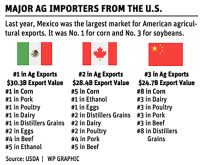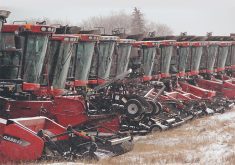Ed Usset has some advice for growers on how to ride today’s bull market.
Many farmers make the mistake of using last year as a guide for when to sell in the upcoming year.
Usset, who is a grain marketing economist with the University of Minnesota, thinks a better idea is to look at the old crop/new crop futures spreads.
Today’s corn and soybean spreads are both highly inverted.
“This has my attention,” he said during a presentation at the 2021 virtual Commodity Classic conference.
Read Also

Farming Smarter receives financial boost from Alberta government for potato research
Farming Smarter near Lethbridge got a boost to its research equipment, thanks to the Alberta government’s increase in funding for research associations.
The new crop corn December futures contract was trading at an 89 cent per bushel discount to the old crop July contract on Feb. 1. That is the second largest inverse in the last 40 years.
Usset found 13 years since 1980 when that old crop/new crop inverse was more than five cents.
In 12 of those 13 years the December futures contract ended up moving lower on Oct. 1 than it was on Feb. 1. It fell anywhere between four cents and $1.53 per bushel.
The only year where the December contract increased in value was 2012-13, which was a drought year.
It is the same scenario with soybeans. The new crop November soybean contract was trading at a $1.91 per bu. discount to the old crop July contract on Feb. 1. That is the largest inverse in the last 40 years.
Usset found 14 years since 1980 when the inverse was greater than 20 cents.
In 12 of those 14 years the November futures contract ended up lower on Oct. 1 than it was on Feb. 1. It dropped anywhere between seven cents and $2.01 per bu.
“These are strong tendencies,” he said.
“I was surprised myself to see the strength of this move. It tells you we ought to stop and pay attention to new crop pricing opportunities.”
The idea that prices are likely to drop between now and harvest makes sense. High prices slow demand, draw in more acres and encourage farmers to apply more fertilizer.
Usset thinks farmers should lock in prices for some of their 2021-22 production sometime in the first half of 2021.
More often than not it pays to lock in those prices in the April-May-June period compared to the January-February-March period.
Matt Bennett, a grain marketing consultant with Channel Seed, agreed that farmers need to seriously consider locking in some of their 2021-22 production at today’s values.
Last year at this time he was looking at corn bids of $3.05 per bushel and soybeans bids of $8.72 per bu. on his farm in Windsor, Illinois.
Today Bennett is seeing new crop prices of $4.35 per bu. for corn and $11.61 for soybeans for fall delivery.
At those prices he can lock in a net profit of $314.75 per acre on his corn and $321.92 per acre on his soybeans.
“We’ve had a ton of opportunity for several weeks straight now to lock in the best net profits for this time of year that we’ve seen in seven or eight years,” said Bennett.
However, he noted that the potential for a further price rally in 2021 is “really, really large” given the tight stocks-to-use ratios for both crops, especially for soybeans.
He noted that the drought maps look worse heading into spring planting in 2021 than they did in 2012.
“I want to hedge but I also want to keep some flexibility,” he said.
Bennett suggested insulating the hedge with some sort of put or call option. That way farmers can still participate in any future price rallies.
Contact sean.pratt@producer.com


















